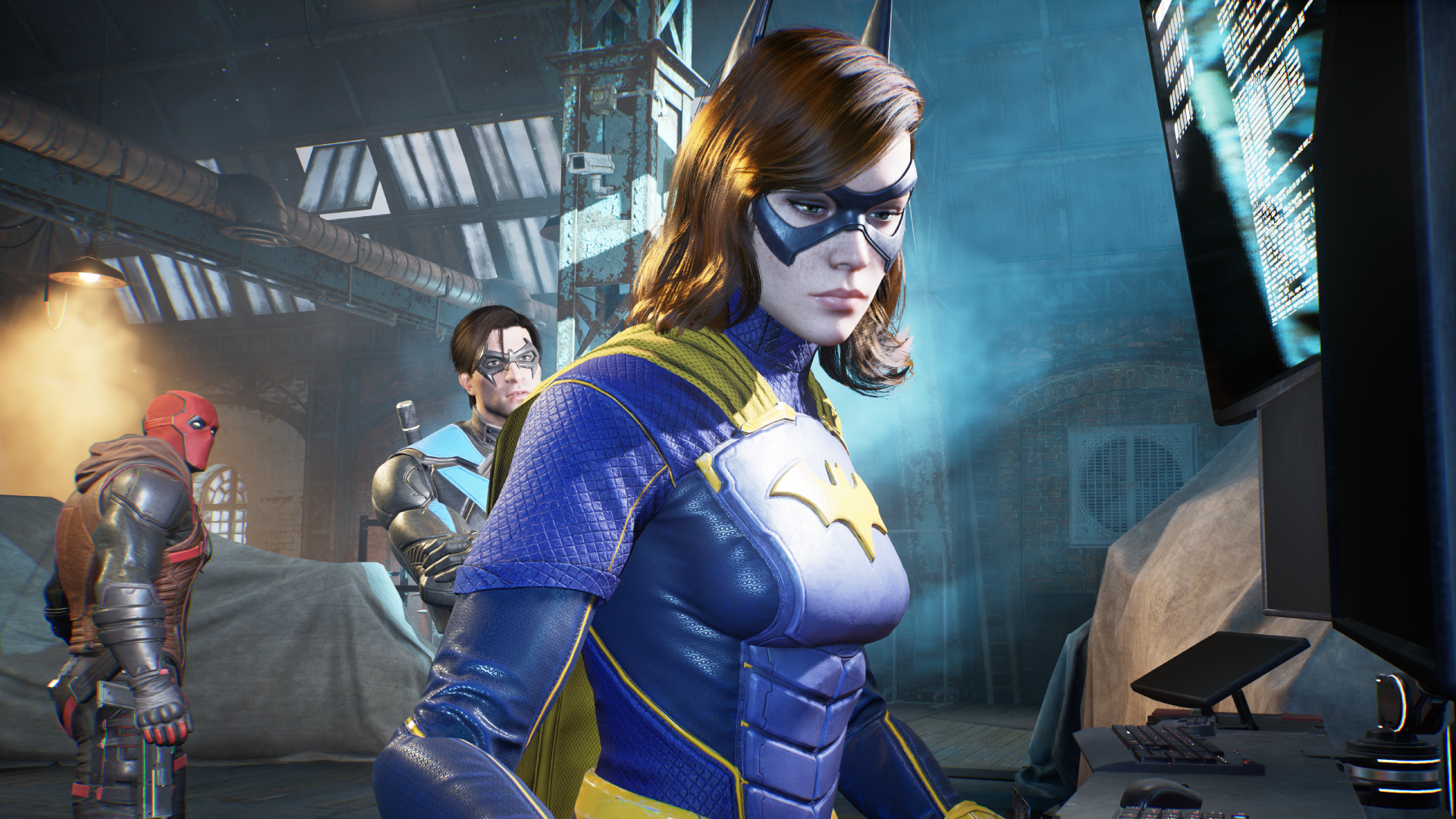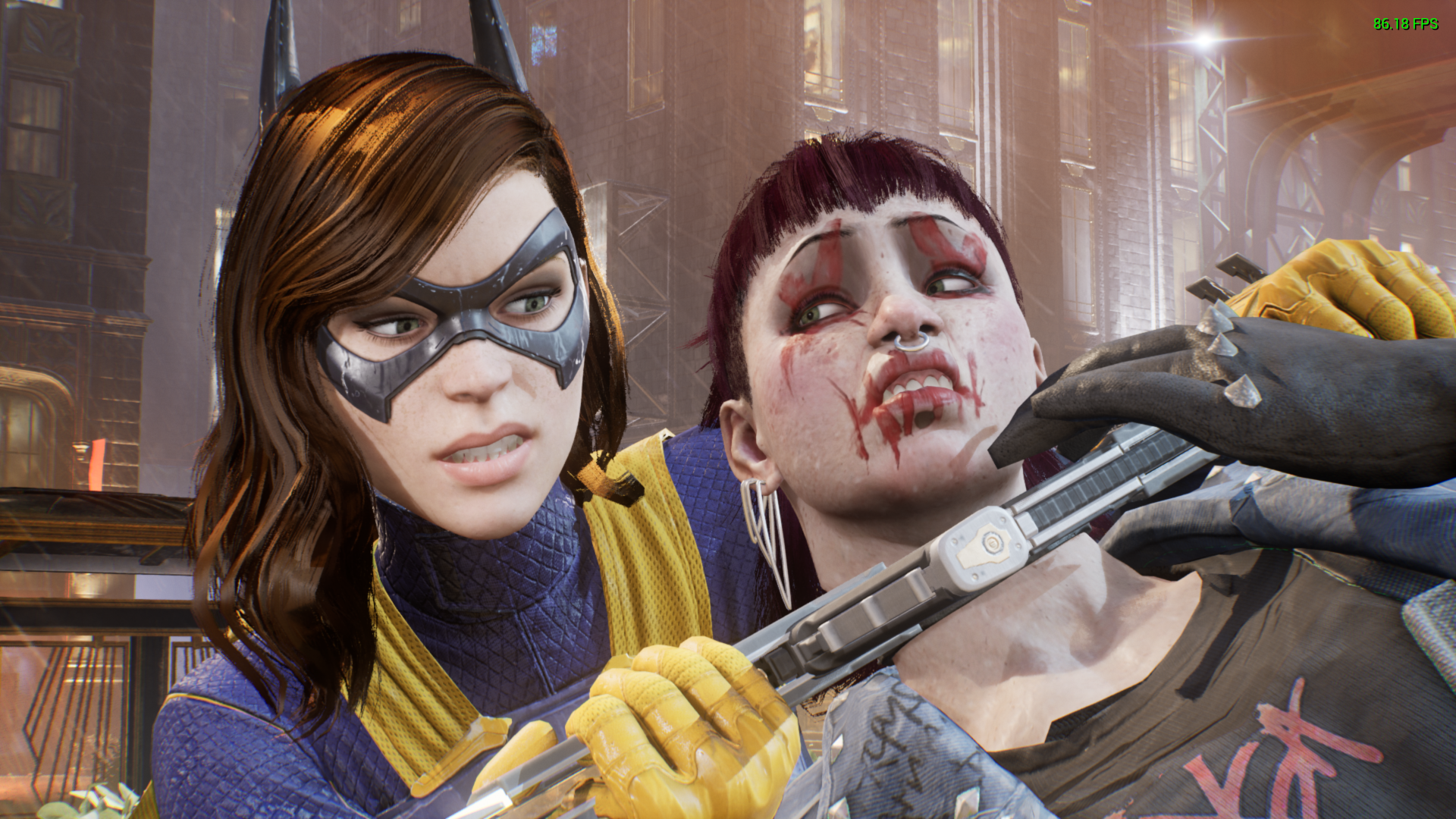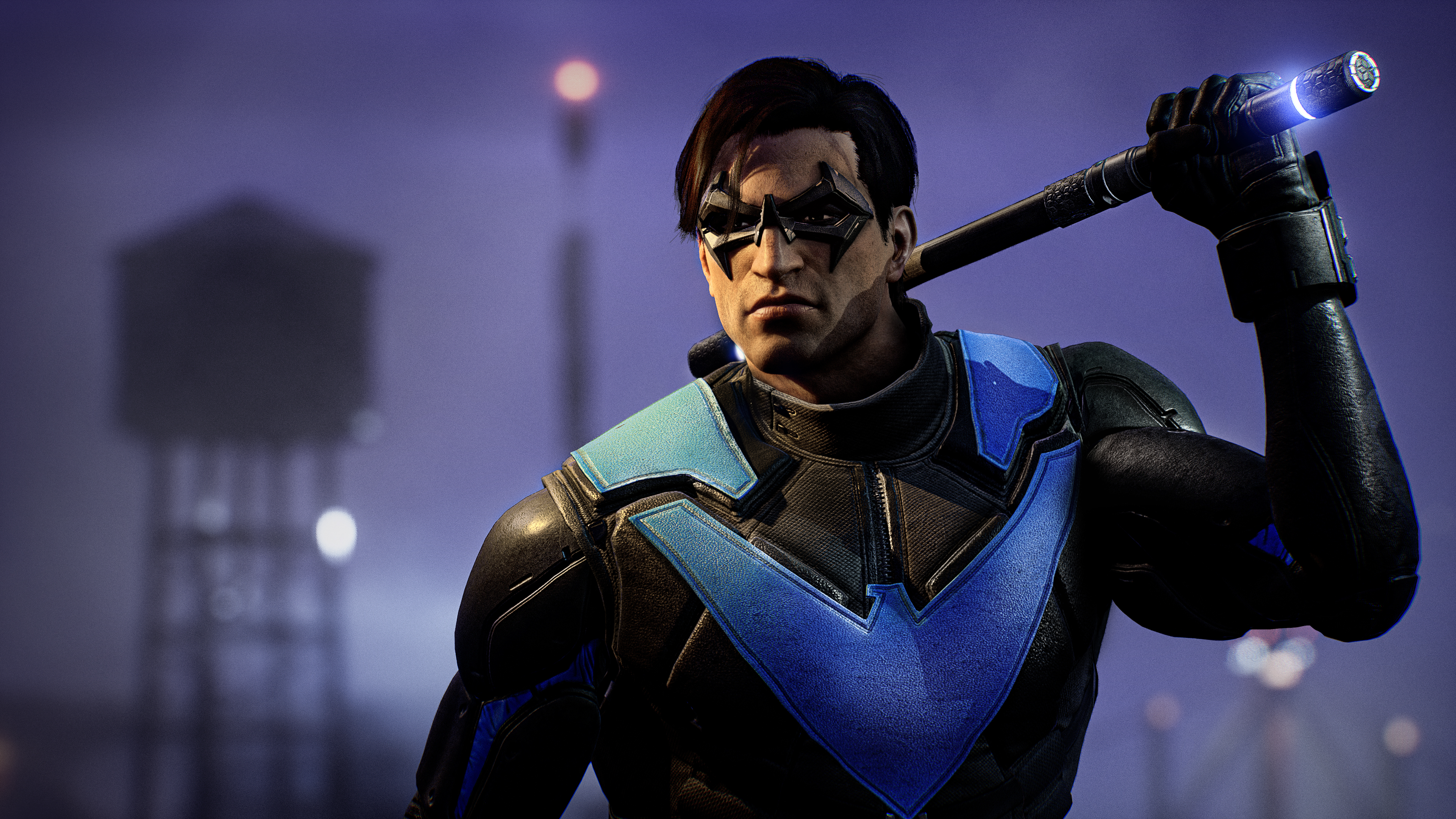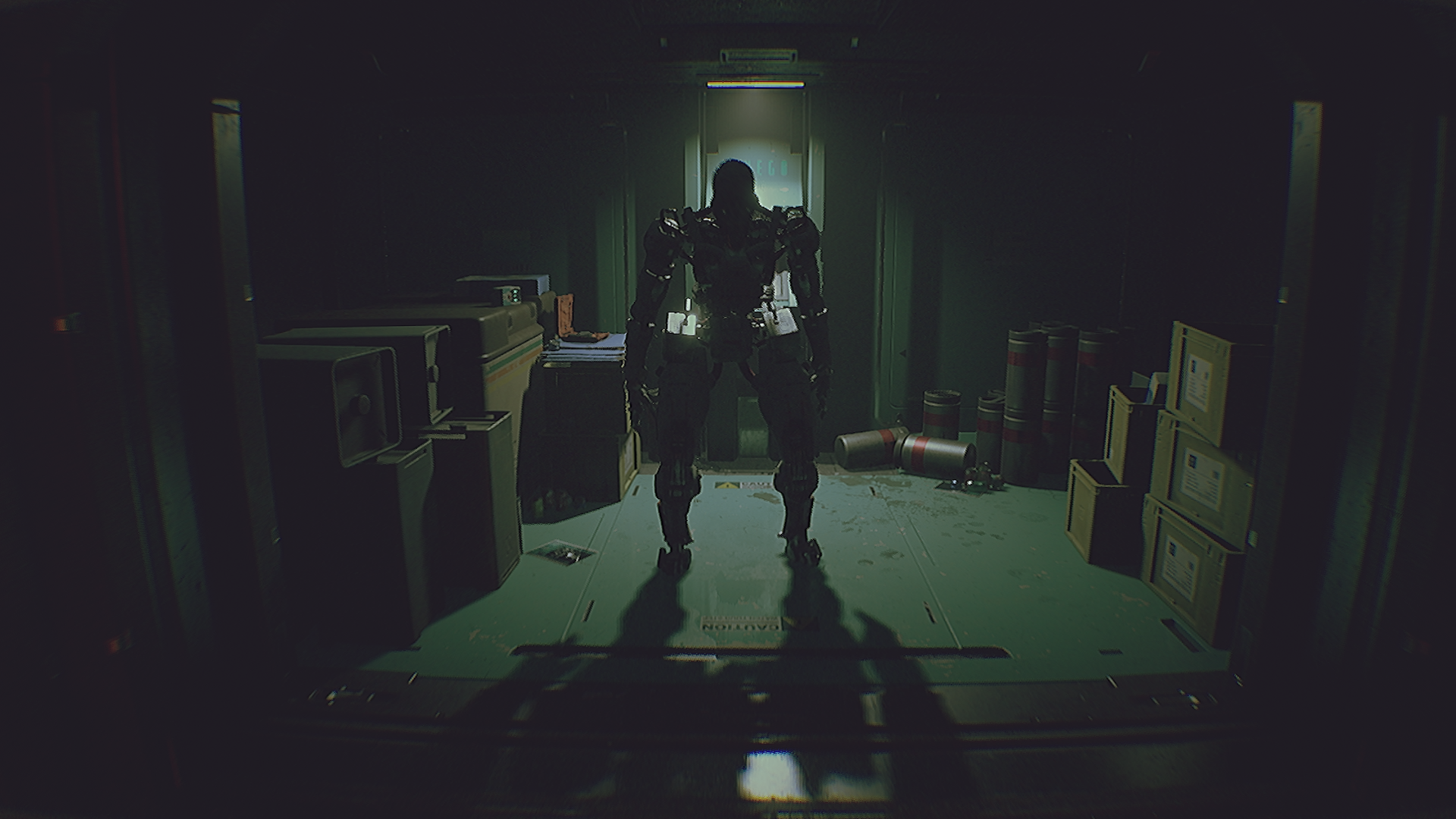Our Verdict
Gotham Knights attempts to differentiate itself from the Arkham series with new characters and a new canon, but spends most of its length poorly imitating what made those games great.
PC Gamer's got your back
What is it? A bat-family stealth action game set in an open world Gotham.
Expect to pay $60
Release date: October 21
Developer: WB Games Montréal
Publisher: Warner Bros. Interactive Entertainment
Reviewed on: RTX 3080 Ti, i9 12900K, 32GB RAM
Multiplayer? Yes
Link: Official site
Gotham Knights has an excruciatingly long intro where Batman dies. He brawls with Ra's al Ghul for what feels like 20 minutes and is eventually crushed by the debris of a crumbling bat cave. The game's heroes find his body in the rubble, clutching his mask in one hand. Batman's death is the setup for a game that wants to distance itself from the Arkham series and introduce four bat protégés as worthy replacements. But Gotham Knights wasn't ready to let go of the Dark Knight.
No matter how dead Batman is in Gotham Knights, this game can't escape his legacy as the best videogame superhero. It mimics the Freeflow combat that defined the Arkham series and features many of the same villains that were already in Rocksteady's games. Gotham Knights tries so hard to convince you that it's different and that Batman is truly, definitively dead, but all of its new characters end up pulling from the same old script.
Gotham Knights did have me fooled for a few hours, though. At first it reminded me how delicious the Arkham-style third-person stealth and combat can be. Every punch and kick has weight and rhythm—it's practically staccato. It's the rare action game, outside of Musou beat-em-ups like Dynasty Warriors, where a group of enemies isn't a chore; it's an opportunity to flex your gadgets and patience to sneak through a puzzle of patrols. As you learn the visual tells and the button presses to associate with them, fights elevate from messy scraps to Hong Kong ballets.
Then I went back and tried both Arkham Origins and Arkham Asylum and realized the trick Gotham Knights played on me. Gotham Knights benefits from the years-long gap between it and the Arkham series, because if you haven't spent time in those games recently, you might have forgotten how tremendous Arkham Asylum's combat was and how consistent it stayed all the way to Arkham Knight. It was already pristine, but Gotham Knights awkwardly tries to break it apart.
It's frustratingly inferior to those years-old games despite its attempts to mirror the Arkham combat. Like so many games that transition into open world RPGs with skill trees and levels and missions and crafting, it takes the resourcefulness and strengths of being Batman and scatters them across a big map for you to accrue over hours and hours of play. And it splits them up between individual heroes. Robin's skill tree has the Batman where you can string up an enemy from a vantage point, but the ability to place elemental-based mines is in another tree. And Batgirl can't do that move at all. Instead of building up an all-powerful arsenal of tools and attacks, each character was only a fraction of the Batman I know.
As a recreation of what made the other games great, it's a failure. Gotham Knights' attempt to translate Arkham into an online co-op game fragments great design into jagged pieces for the cheap dopamine hit of gradual progression.
Carbon copies
Early on, Batgirl, Robin, Nightwing, and Red Hood are effectively Batman lite, but in four different sizes. Because they're interchangeable, they all have the same goal—to follow the conspiracy that Batman was chasing before he died—and all the same basic skills needed to do the job.
Keep up to date with the most important stories and the best deals, as picked by the PC Gamer team.
Their conversations are punctuation between the open world segments and setup for your next mission. There are a few scenes that deal with the obvious tension in the group, but the game is most interested in having an excuse for four playable characters. Jason Todd, or Red Hood, died and was resurrected, and yet nobody wants to talk about how that has radically changed his relationship with the rest of the crew and his drive to fight crime in the same way. The characters can't stray far from the mission or Batman's values, which dulls Gotham Knights' one major chance to differentiate itself from the Arkham games.
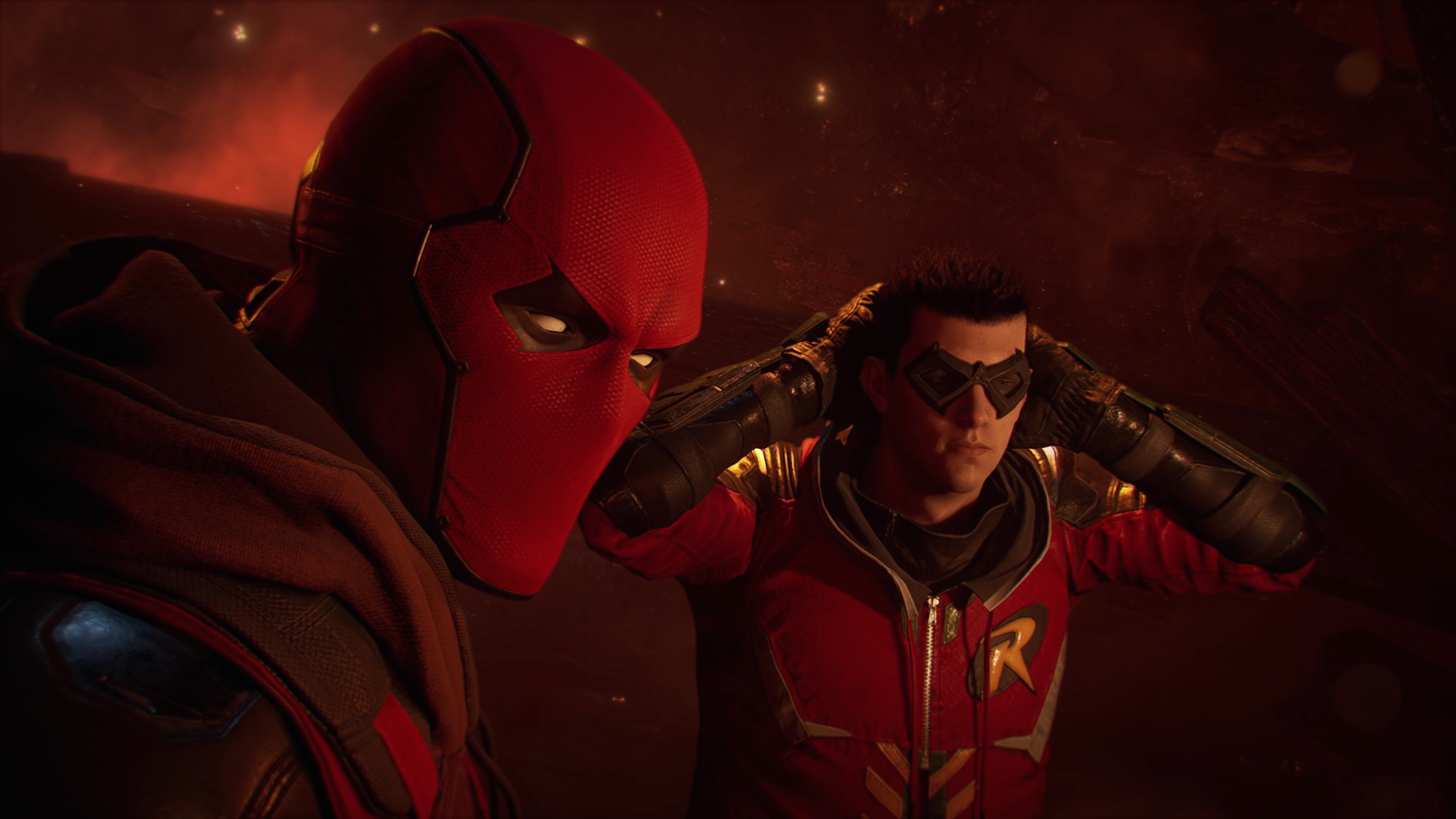
You can swap between Batpeeps in the central Belfry location; level and ability points carry over, and each character is given adequate armor and weapons to equip. They do develop their own strengths through their skill trees: Robin can run around without making noise, Batgirl can disable security cameras and turrets, Nightwing can debuff and heal allies, and Red Hood can tank hits and crowd control enemies.
This can slightly change your approach to stealth and combat scenarios, but the disadvantages for being the least optimal character aren't substantial. I spent most of my time as Batgirl for her swift combo attacks and because her suits looked nice, and I ran into zero roadblocks in the open world or in the game's cordone-off villain missions—which see the return of characters like Mr. Freeze, Harley Quinn, and Clayface.
In two-player co-op I could start to see where their distinct traits interlock. I fought Harley Quinn—an aggressive, high-level boss—as Robin with an ally Red Hood who repeatedly got caught in lethal grab attacks. I built up my Momentum meter to deploy a decoy that kept the boss distracted while I helped Red Hood up from a downed state or gave him room to heal. But outside of tough encounters like that, there's little need to build strategies around abilities. You just cooperatively punch enemies until a notification pops with an XP reward.
Each of the characters play like a diluted version of Arkham Batman.
The boss fights in Gotham Knights don't stand out like they do in the Arkham games, largely opting for battles of stats and reflexes. Bosses have big health bars, hard-hitting combos and AoE attacks that are designed to simply punish your dodge timing and positioning compared to normal enemies. As a solo player, they're marathons that drain you of resources, forcing you to balance earning Momentum and spending it on your own high-damage abilities to catch up. In co-op, they resemble simple MMO bosses that require whoever has their focus to work on dodging while the other gets damage in.
Gotham Knights doesn't fully commit to archetypes like tank, support, and DPS, though. And as a result, each of the characters play like a diluted version of Arkham Batman. None of them have truly dramatic strengths or weaknesses. Until you dig down into the final parts of the talent trees, craft unique gear, and equip them with stat-enhancing armor mods, the four heroes can't match how perfect Batman was as a videogame protagonist. He's a walking Swiss army knife of gadgets and fighting techniques, all of which is at your disposal. But Gotham Knights killed him, split his body into four parts, and forces you to play as one severed limb at a time.
Been there, done that

Gotham Knights' cleverest idea is taking open world activity bloat and breaking it up into nightly adventures, initiated after you check in at the Belfry. As you grapple between rooftops, you come across special targets that, when interrogated, will give you information—hilariously delivered as clue points dropped on the ground like Diablo loot—leading to premeditated crimes that will show up with better XP and crafting material rewards the next night you explore the city. Most missions have bonus objectives like finishing without being detected or killing enemies with ranged weapons, but premeditated crimes have more enemies and even harder objectives. If you fail or ditch the area, you can't do them again.
These crimes were the steepest and most satisfying challenges that Gotham Knights' open world gave me, and felt worth the heap of rewards. Only the premeditated crimes made me consider how to apply the Bat Fam's specialties as the encounter required. As Batgirl I could scan an area, disable a turret or enemy sniper and swoop in for a silent knockout. When I inevitably screwed up and got detected, these missions became frantic as I tried to manage multiple enemies throwing fire bombs and bullets my way.
But by the time I was finishing my fourth bank robbery and gang deal, the suspension of disbelief wore away. Gotham city has a lot of crime—way more than is realistic for what is supposed to be a real city where people live, even if it is an infamous hellhole. You'd at least think the criminals would learn to go for less ambitious crimes than ones that involve 20 of their buddies and a stolen laser cutter to open a vault every other day. There's no systemic or procedural progression to make Gotham's absurd ecosystem of crime adapt to your actions, so stopping these heists and kidnappings quickly loses all significance.
It's a half-baked system, and yet sadly the only thing in the game that aims higher than all the Arkham games before it.
Swing and a miss

Even in a largely barren open world, Gotham Knights strained my PC's resources while clearing out all the crime and collectibles. I ran the game at 4K (with DLSS enabled) on a 3080 Ti and an Intel i9 2900K and the open world tanked my fps down into the 60s and would dip lower when I fought near fires or other busy effects. Locking my fps to 60 made it more consistent, but wasn't enough to completely smooth out performance.
Interior areas ran much better, but considering the bulk of the game has you sifting through the city, it was a pain to have to manage frame drops without falling off a perch and alerting an entire group of enemies. I also experienced a handful of crashes when I entered story missions and the Belfry, but they largely cleared up after upgrading to the latest Nvidia drivers and restarting my PC. Other PC Gamer staff reported framerate issues as well at 1080p. None of my issues made the game unplayable, but it's concerning for players with lesser hardware, and made an early chunk of the game a pain to play as I adjusted settings.
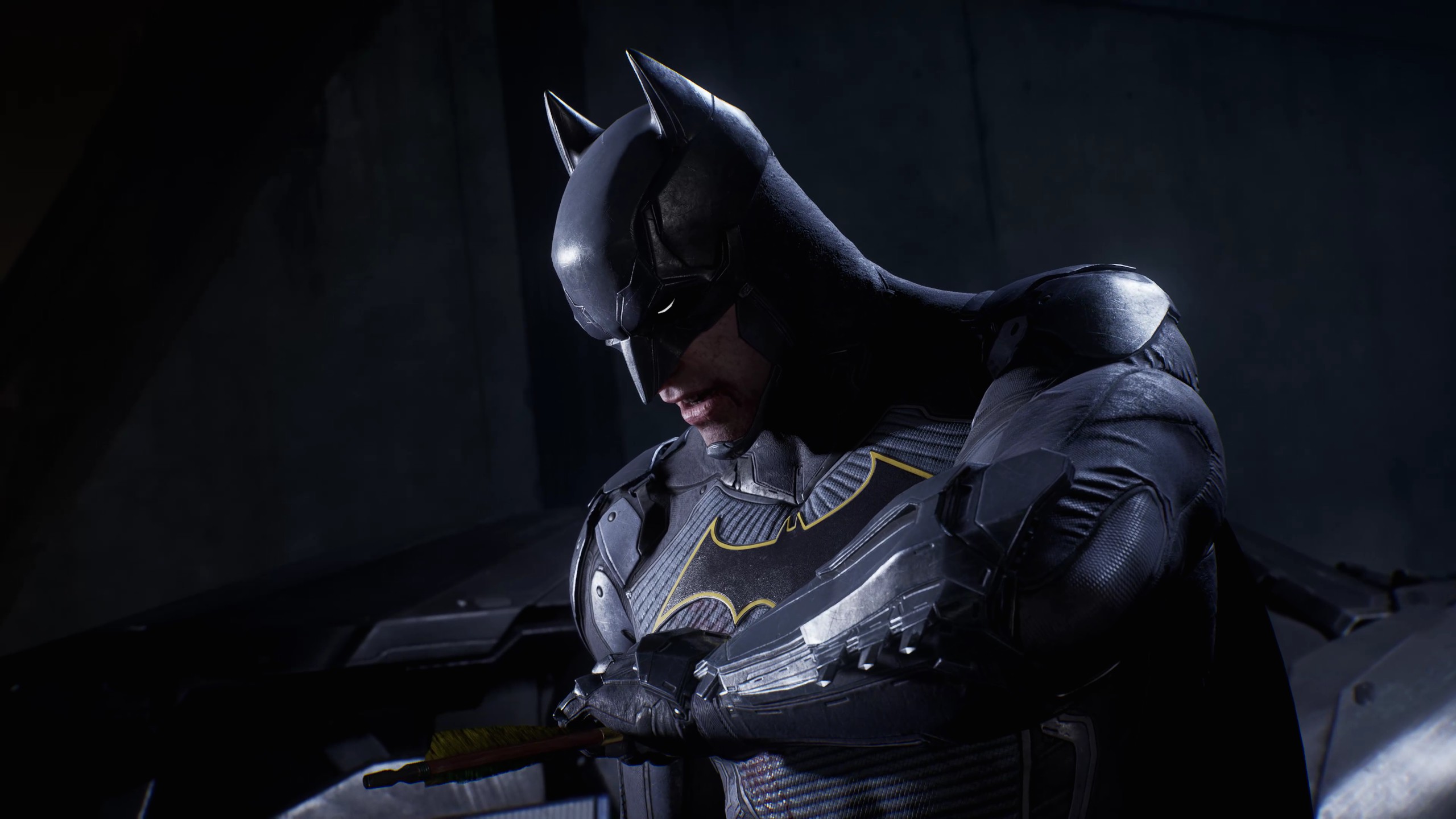
Everything in Gotham Knights is done better in another game; some with Batman and some without. The Arkham games had RPG-like talent trees and progression, but those were layered on top of already satisfying stealth and combat systems. Gotham Knights starts and ends with brawls that feel like fighting in mud, even compared to the developer's own Arkham Origins. And its large-scale version of Gotham is rife with duplicated crimes and almost no reason to keep it safe in the first place. It's a mostly empty playground for its four heroes to farm XP for the next mission.
Gotham Knights tried to distance itself from Batman by killing him off, but instead it just split him into four pale imitations adrift in a bland open world. It's just as well he's dead; even Batman couldn't fix this mess.
Gotham Knights attempts to differentiate itself from the Arkham series with new characters and a new canon, but spends most of its length poorly imitating what made those games great.
Tyler has covered videogames and PC hardware for 15 years. He regularly spends time playing and reporting on games like Diablo 4, Elden Ring, Overwatch 2, and Final Fantasy 14. While his specialty is in action RPGs and MMOs, he's driven to cover all sorts of games whether they're broken, beautiful, or bizarre.
